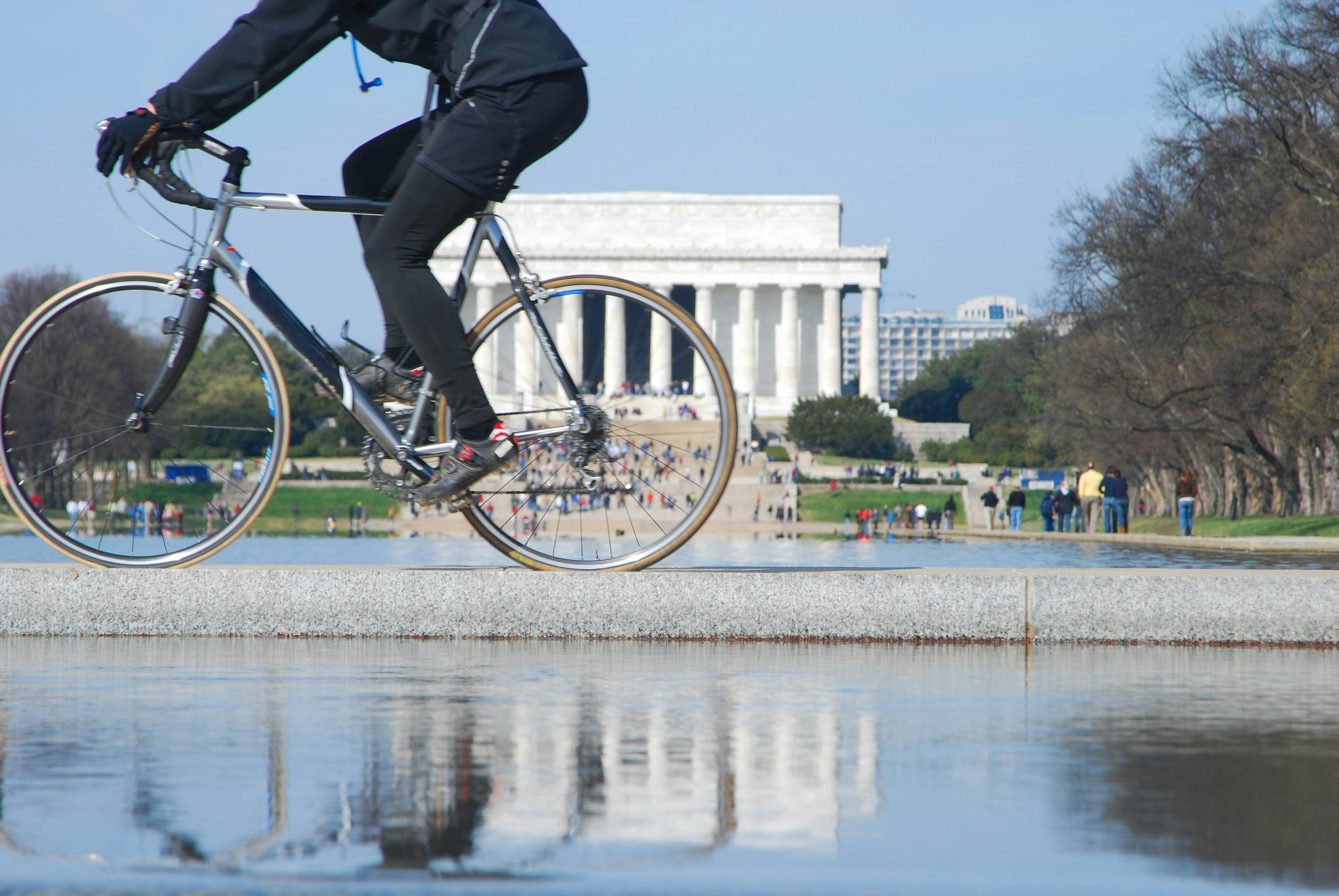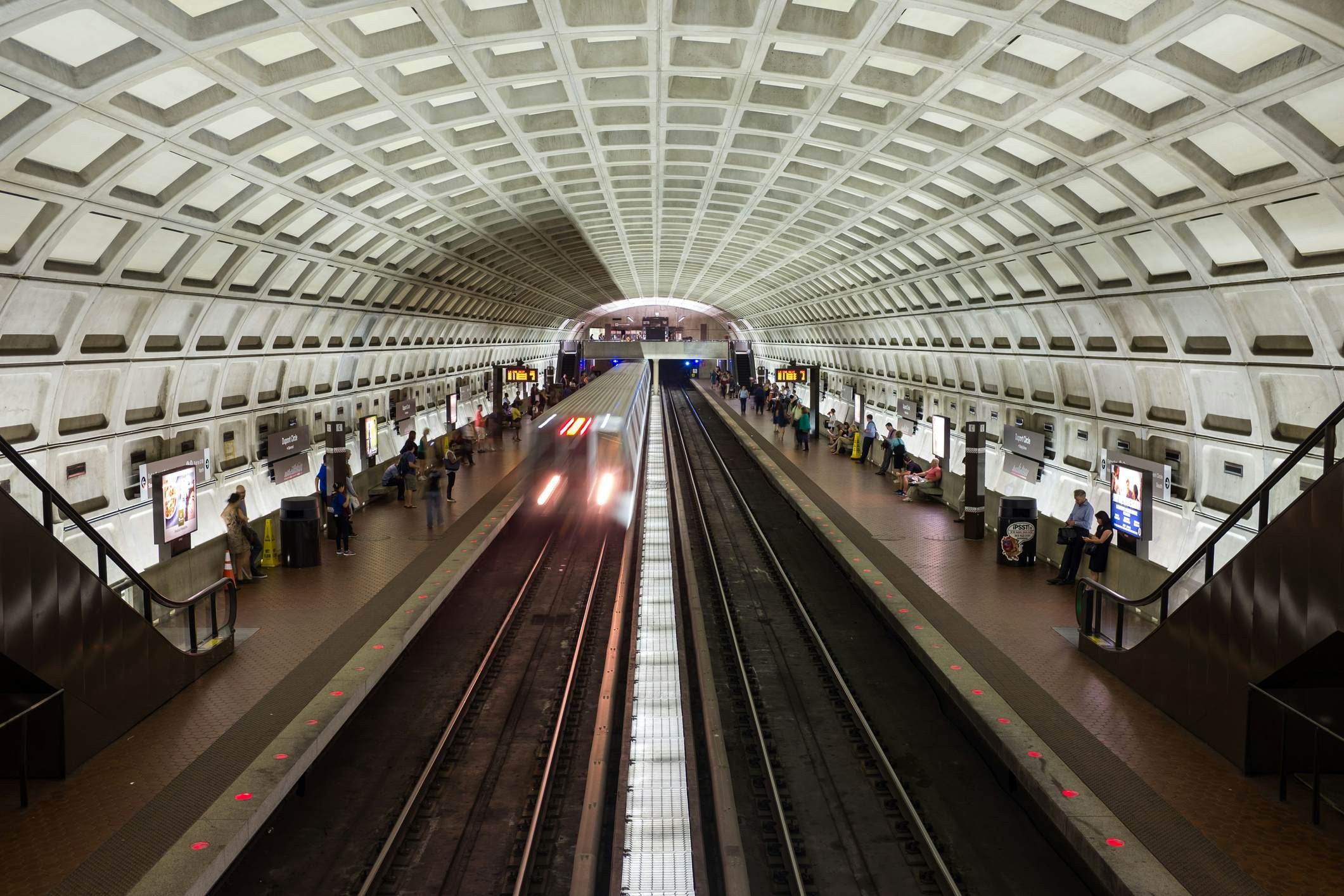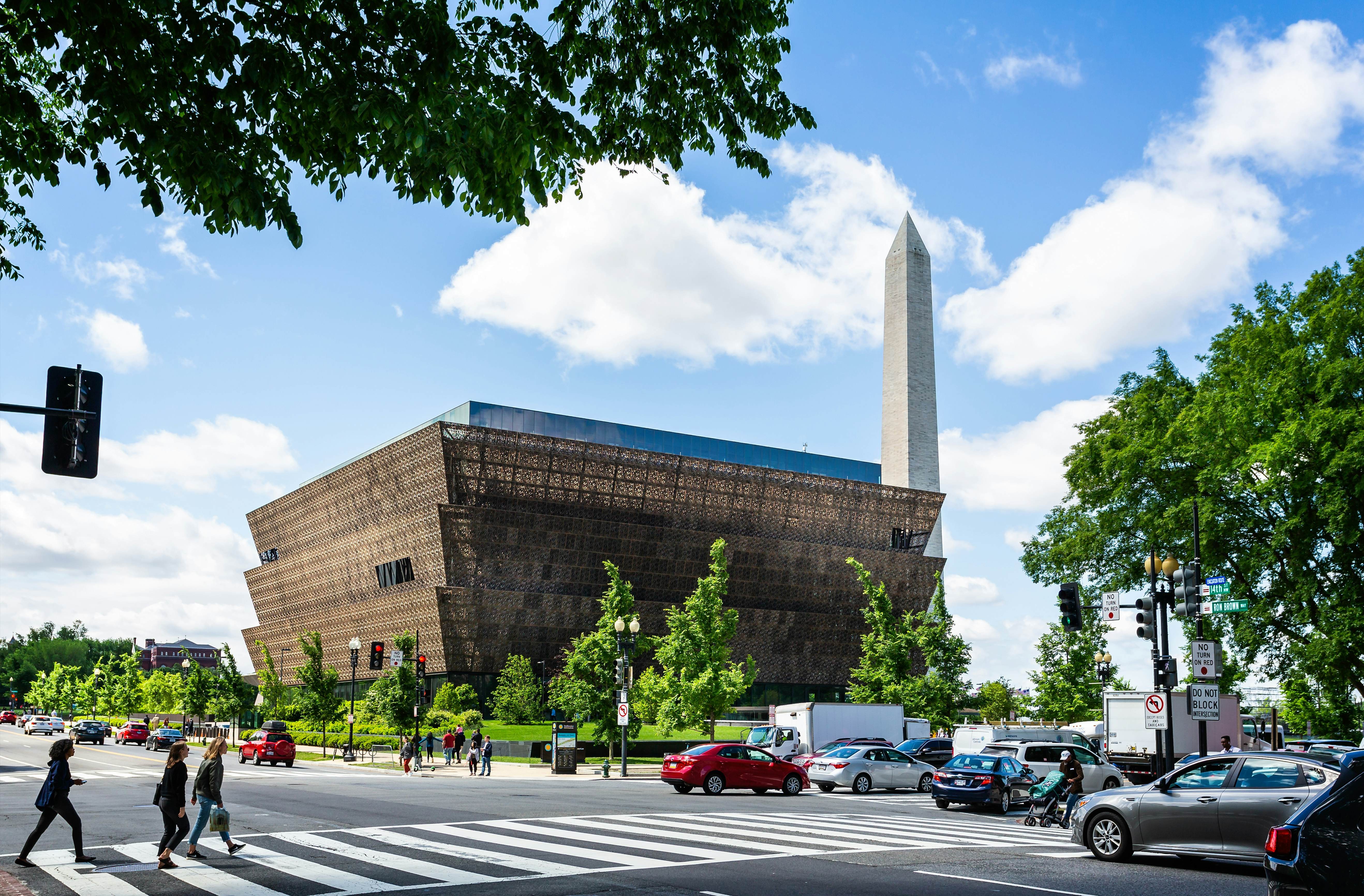Navigating Washington, DC, doesn’t have to be a headache. With SIXT.VN, planning your perfect trip to explore the US capital is easy, offering insider tips on the best transport options and attractions, ensuring a smooth and unforgettable experience. Think efficient transit systems, bike-friendly streets, and scenic water taxis, all contributing to unforgettable city tours, historical landmark visits, and museum explorations.
1. What’s the Most Budget-Friendly Way to Get Around Washington, DC?
The most budget-friendly way to explore Washington, DC, is by taking the bus. The Washington Metropolitan Area Transit Authority (WMATA) offers affordable fares on the Metrobus, costing only $2 per ride, and is working towards a zero-emissions fleet by 2042. You can also take advantage of unlimited bus-to-bus transfers for two hours when paying with SmarTrip on your phone. For tourists, the DC Circulator is a fantastic option for just $1, providing access to popular tourist sites, museums, and neighborhoods. According to WMATA, over 400,000 passengers ride the DC Circulator each month, making it a popular and affordable choice.
Buses are a great way to see the city at a leisurely pace, allowing you to soak in the sights and sounds of Washington, DC. Unlike the Metro, which primarily runs underground, buses travel along surface streets, providing a unique vantage point of the city’s landmarks and neighborhoods. This can be especially appealing for first-time visitors who want to get oriented and familiar with the layout of the city. The Metrobus network is extensive, connecting various neighborhoods with precision. It provides an opportunity to explore areas that may not be easily accessible by Metro or other modes of transportation. This allows you to discover hidden gems and local favorites off the beaten path, enriching your travel experience. The use of SmarTrip cards or mobile payment options makes the process seamless and convenient.
2. How Can I Cycle Through Washington, DC?
Cycling through Washington, DC, is a delightful way to explore the city. Capital Bikeshare offers regular and e-bike rentals, providing a convenient and eco-friendly option for getting around. A day pass costs $8 for unlimited 45-minute rides on a classic bike, or you can opt for an e-bike day pass at $0.10 per mile. There are over 700 stations across the DC metro area, making it easy to dock and manage your rental via the Capital Bikeshare mobile app. Popular cycling areas include the National Mall and the Tidal Basin, while longer routes like the Mt Vernon loop or the C&O Canal trails offer scenic adventures.
Cycling is a popular way to see the sites. According to the National Park Service, the National Mall sees over 25 million visitors each year, and many choose to explore it by bike. With designated bike lanes and trails, cyclists can safely navigate the city while enjoying iconic landmarks and green spaces. The city’s relatively flat terrain also makes cycling accessible to people of all fitness levels. E-bikes offer an extra boost for tackling hills or covering longer distances, ensuring a comfortable and enjoyable ride. Cycling allows you to discover hidden gems and local favorites that might be missed when traveling by car or public transportation. The flexibility to stop and explore points of interest at your own pace enhances the overall travel experience, making it a memorable and engaging way to see Washington, DC.
 Cyclists ride in front of the US Capitol Building on a sunny day.
Cyclists ride in front of the US Capitol Building on a sunny day.
3. What Unique Transportation Options Are Available in Washington, DC?
For a unique perspective of Washington, DC, consider taking a Water Taxi. The Potomac Water Taxi offers trips starting at $22 one-way, providing scenic views of the city’s waterfront. You can hop on and off at District Wharf, Old Town Alexandria, National Harbor, and the Georgetown Waterfront from March to December. For a free option, check out the District Wharf Jitney, which crosses the channel from the Wharf to East Potomac Park, a popular spot for viewing cherry blossoms.
Water Taxis provide a refreshing way to see the city from a different vantage point. These watercraft offer stunning views of iconic landmarks, monuments, and waterfront developments. The Potomac River has played a vital role in the city’s history and economy, and taking a water taxi allows you to connect with that heritage while enjoying a leisurely ride.
4. How Easy Is It to Navigate Washington, DC, Using the Metrorail?
Navigating Washington, DC, is made easy by its straightforward Metrorail system, often referred to simply as the Metro. The train lines come in six colors – red, green, yellow, blue, silver, and orange – and transport you to 98 stations in DC, Maryland, and Virginia. The colored lines simplify transfers, and clear signage guides you along the way. The Metro map is prominently displayed in trains and stations for easy reference. Fares depend on distance, time of day, and journey, with off-peak hours offering potential savings. The Metro runs Sunday through Thursday until 12 am and Fridays and Saturdays until 1 am.
The Washington, DC, Metro system is considered one of the most efficient and user-friendly subway systems in the United States. The straightforward design and clear signage make it easy for both residents and tourists to navigate. According to WMATA, the Metro serves an average of 600,000 passengers each weekday, highlighting its significance as a primary mode of transportation in the region. A significant advantage of using the Metro is its ability to bypass the city’s notorious traffic congestion. During peak hours, the Metro provides a faster and more reliable alternative to driving, allowing you to reach your destination without delays.
 A Metro train car pulls into a station with passengers waiting on the platform.
A Metro train car pulls into a station with passengers waiting on the platform.
5. What Is a SmarTrip Card, and How Does It Help Me Get Around Washington, DC?
A SmarTrip card is your rechargeable fare card for accessing DC’s transit system. It’s the payment method for transit across the greater DC metro area, including Maryland and Virginia. You can purchase a card from any Metrorail station, Metro retail store, or mobile phone wallet (like Apple or Google Pay). SmarTrip covers rides on WMATA’s transit, including Metrorail and Metrobus, and with regional transit partners like the DC Circulator and Arlington’s ART bus.
You may also save money by purchasing a 1-, 3-, or 7-day Unlimited Pass. These passes start at $13 and are available through the SmarTrip App or at any rail Metrorail station or retail store. Unlimited passes don’t cover rides on transit partners like the DC Circulator (requiring a 7-day regional bus pass for $12) and only partially cover rides on express bus routes. According to WMATA, over 90% of Metro riders use SmarTrip cards or mobile pay options, highlighting their popularity and convenience.
6. Is It Advisable to Use Ridesharing Services in Washington, DC?
Ridesharing services like Uber and Lyft are popular options. Taxi services are also available, such as DC Yellow Cab. According to a report by the DC Department of For-Hire Vehicles, ridesharing trips have increased by over 30% in the past year, indicating their growing popularity.
Ridesharing offers a convenient and flexible way to navigate the city. With a few taps on your smartphone, you can request a ride from virtually anywhere, and a driver will arrive within minutes. This is especially useful when traveling to destinations not easily accessible by public transportation or when you prefer the convenience of door-to-door service. Ridesharing services often offer competitive pricing compared to traditional taxis, making them an attractive option for budget-conscious travelers. You can also compare prices and choose the service that best fits your needs. Plus, the ability to track your ride in real-time and share your location with friends or family adds an extra layer of security.
 Cars line a busy street near a museum in Washington, DC.
Cars line a busy street near a museum in Washington, DC.
7. Is Washington, DC, a Walkable City?
Yes, DC is a walkable city, with some neighborhoods being more straightforward than others. Areas like the National Mall or the Wharf are easily navigable on foot, making walking a few blocks to your destination often more efficient than using transit. Google Maps offers up-to-date walking directions to help you find your way.
Washington, DC, has been recognized as one of the most walkable cities in the United States. According to Walk Score, a website that measures the walkability of cities and neighborhoods, Washington, DC, has a walk score of 77 out of 100, indicating that most errands can be accomplished on foot. The city’s layout is designed to be pedestrian-friendly, with wide sidewalks, well-maintained streets, and an abundance of crosswalks. The presence of numerous parks, green spaces, and pedestrian-only zones further enhances the walking experience.
8. Should I Rent a Car for My Visit to Washington, DC?
Renting a car in DC can be a headache due to hectic parking, high costs, and tricky traffic, especially during rush hour. Unless you plan on taking a day trip outside the city, accessible transit options make renting a car unnecessary. According to the AAA Foundation for Traffic Safety, drivers in urban areas spend an average of 67 hours per year in traffic congestion, highlighting the potential challenges of driving in DC.
Navigating DC by car involves dealing with traffic congestion, limited parking availability, and the stress of finding your way through unfamiliar streets. The city’s compact layout and numerous one-way streets can also make driving a challenging experience, especially for first-time visitors. Parking in DC can be both expensive and difficult to find. Street parking is often limited, and parking garages can charge high rates, especially in popular areas. Plus, you’ll need to pay attention to parking regulations to avoid tickets or towing.
9. Is Washington, DC, an Accessible City for People with Disabilities?
DC strives to be an accessible city for all visitors. Metrorail and Metrobus provide accommodations for all travelers, including free and reduced fares for seniors and those with disabilities, wheelchair-accessible elevators in every rail station, and MetroAccess, a transit service for those who can’t use the accessible bus or rail system due to a disability. Visit WMATA‘s accessibility page or read its comprehensive Accessible Transportation Options guide for an overview of your options.
DC has made significant efforts to improve accessibility for people with disabilities. The city’s commitment to inclusivity extends beyond transportation to include accessible accommodations, attractions, and services. According to the US Department of Justice, Title III of the Americans with Disabilities Act (ADA) requires public accommodations to provide equal access to goods, services, and facilities for individuals with disabilities. This means that hotels, restaurants, museums, and other businesses in DC must make reasonable modifications to ensure accessibility for all.
10. What Are Some Essential Tips for Planning a Trip to Washington, DC?
When planning a trip to Washington, DC, it’s essential to consider the best time to visit, popular attractions, and transportation options. According to the US Travel Association, Washington, DC, welcomes over 20 million visitors each year, making it a popular destination. Planning your trip in advance can help you make the most of your visit and avoid potential challenges.
When planning your trip, consider the time of year. Spring and fall offer pleasant weather and fewer crowds, making them ideal times to explore the city. Summer can be hot and humid, while winter can be cold and snowy. Each season has its own unique charm, so choose the one that best suits your preferences. Prioritize the attractions and landmarks you want to see. Washington, DC, is home to numerous iconic monuments, museums, and historical sites. Research these attractions in advance and create a list of must-see destinations. Some popular choices include the White House, the US Capitol Building, the National Mall, and the Smithsonian museums.
Discover Washington, DC, with SIXT.VN
Ready to explore Washington, DC, with ease? SIXT.VN offers comprehensive travel solutions, including airport transfers, hotel bookings, and guided tours, ensuring a seamless and memorable experience. Contact us today to plan your perfect trip! Address: 260 Cau Giay, Hanoi, Vietnam. Hotline/Whatsapp: +84 986 244 358. Website: SIXT.VN.
FAQ: Travel in Washington, DC
1. What is the best way to get from the airport to downtown Washington, DC?
The best way to get from the airport to downtown Washington, DC, is via the Metrorail. Both Reagan National Airport (DCA) and Washington Dulles International Airport (IAD) have direct Metrorail connections, providing a convenient and affordable option.
2. How much does it cost to ride the Metro in Washington, DC?
The cost to ride the Metro in Washington, DC, depends on the distance, time of day, and journey. Fares typically range from $2 to $6, with off-peak hours offering potential savings.
3. Are there any free attractions in Washington, DC?
Yes, there are many free attractions in Washington, DC, including the National Mall, the Smithsonian museums, and the US Capitol Building (with a free tour).
4. What is the best time of year to visit Washington, DC?
The best time of year to visit Washington, DC, is in the spring (April-May) or fall (September-October) for pleasant weather and fewer crowds.
5. How can I purchase a SmarTrip card?
You can purchase a SmarTrip card from any Metrorail station, Metro retail store, or mobile phone wallet (like Apple or Google Pay).
6. Is it safe to walk around Washington, DC, at night?
Most areas of Washington, DC, are generally safe to walk around at night, but it’s always best to be aware of your surroundings and avoid poorly lit or isolated areas.
7. Are there any day trips I can take from Washington, DC?
Yes, there are several day trips you can take from Washington, DC, including visits to Alexandria, Virginia, Annapolis, Maryland, and Gettysburg, Pennsylvania.
8. How do I use the DC Circulator bus?
You can use the DC Circulator bus by paying $1 per ride or purchasing a 7-day regional bus pass. The bus connects popular tourist sites, museums, and neighborhoods.
9. Is the Washington, DC, Metro system accessible for people with disabilities?
Yes, the Washington, DC, Metro system is accessible for people with disabilities, with wheelchair-accessible elevators in every rail station and other accommodations.
10. What are some popular neighborhoods to visit in Washington, DC?
Some popular neighborhoods to visit in Washington, DC, include Georgetown, Adams Morgan, the Wharf, and Capitol Hill, each offering unique attractions and experiences.



